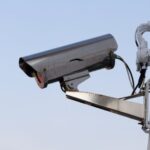The New York Police Department (NYPD) is once again coming under fire for its deceptive surveillance practices. The latest backlash comes courtesy of the Legal Aid Society and the Surveillance Technology Oversight Project (STOP), which filed a Freedom of Information request to learn more about the agency’s surveillance activities.

The documents released through that request have been heavily redacted by the NYPD, but they reveal that the department has spent $159 million on undisclosed surveillance technology over the past decade. The money came from a “special expense fund” that exists outside of the view of New York City Council and other government approval channels, prompting critics to describe it as a slush fund for things the NYPD wants to keep hidden from the public.
Those critics also argued that the NYPD’s contracts violate New York’s Public Oversight of Surveillance Technology Act, which was passed last year. Under the terms of the new law, the NYPD is required to disclose any surveillance expenses, and must explain how it is using the technology and how it is protecting the personal information its agents collect. However, the NYPD noted that all of the contracts revealed through the request predate that particular law, and therefore do not violate the letter of the mandate.
So what did the NYPD buy with all of that money? Elbit Systems inked a five-year, $800,000 deal with the department in 2014 to maintain unspecified surveillance devices (Elbit is best known for surveillance cameras). The NYPD also bought Stingrays from Harris Corp. and the KeyW Corporation, and spent $750,000 with X-ray van provider American Science and Engineering in 2016. The Stingray is designed to mimic a cellphone tower and is not supposed to be used without a warrant, while the X-ray vans could expose bystanders to high levels of radiation.
Finally, the NYPD signed a $6.8 million contract with IDEMIA in 2018, and at one point had a separate $11.4 million deal with MorphoTrak, a Safran subsidiary that has since been folded into IDEMIA. Both entities offer biometric facial recognition technology.
Of course, facial recognition has long been a controversial subject where the NYPD is concerned. The department has consistently tried to cover up its use of the technology, and was recently caught lying about its extensive relationship with Clearview AI. The department was opening new trial accounts up until February of 2020, and seems to have tried to use the platform to circumnavigate oversight channels.
Amnesty International has pushed to ban the police use of facial recognition, citing the NYPD’s setup of one of the most invasive surveillance networks in the country. Critics have also raised concerns about racial bias, and about the NYPD’s history of illegally storing biometric data.
Sources: Yahoo! News, Texas News Today, STOP
–
August 13, 2021 – by Eric Weiss







Follow Us